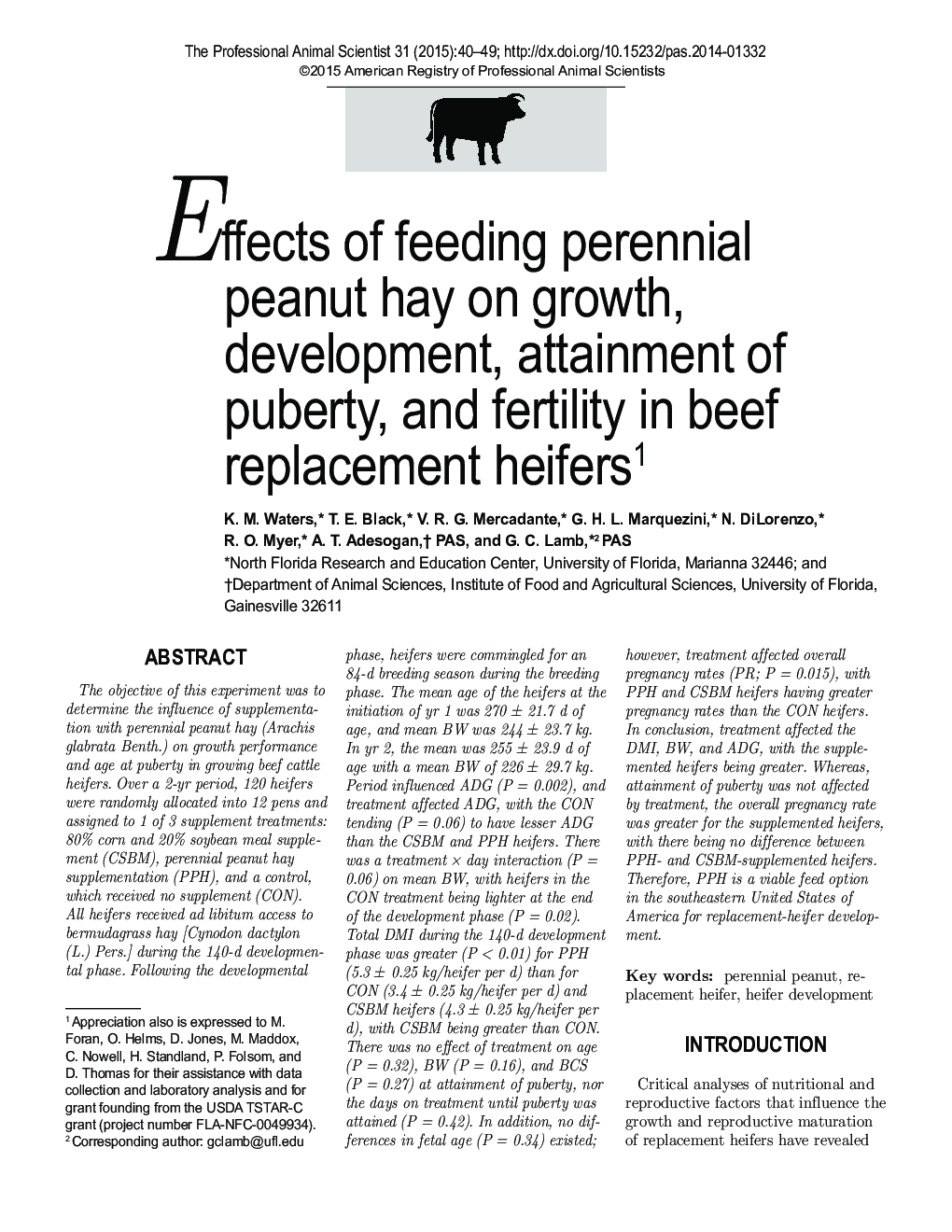| Article ID | Journal | Published Year | Pages | File Type |
|---|---|---|---|---|
| 10161832 | The Professional Animal Scientist | 2015 | 10 Pages |
Abstract
The objective of this experiment was to determine the influence of supplementation with perennial peanut hay (Arachis glabrata Benth.) on growth performance and age at puberty in growing beef cattle heifers. Over a 2-yr period, 120 heifers were randomly allocated into 12 pens and assigned to 1 of 3 supplement treatments: 80% corn and 20% soybean meal supplement (CSBM), perennial peanut hay supplementation (PPH), and a control, which received no supplement (CON). All heifers received ad libitum access to bermudagrass hay [Cynodon dactylon (L.) Pers.] during the 140-d developmental phase. Following the developmental phase, heifers were commingled for an 84-d breeding season during the breeding phase. The mean age of the heifers at the initiation of yr 1 was 270 ± 21.7 d of age, and mean BW was 244 ± 23.7 kg. In yr 2, the mean was 255 ± 23.9 d of age with a mean BW of 226 ± 29.7 kg. Period influenced ADG (P = 0.002), and treatment affected ADG, with the CON tending (P = 0.06) to have lesser ADG than the CSBM and PPH heifers. There was a treatment Ã day interaction (P = 0.06) on mean BW, with heifers in the CON treatment being lighter at the end of the development phase (P = 0.02). Total DMI during the 140-d development phase was greater (P < 0.01) for PPH (5.3 ± 0.25 kg/heifer per d) than for CON (3.4 ± 0.25 kg/heifer per d) and CSBM heifers (4.3 ± 0.25 kg/heifer per d), with CSBM being greater than CON. There was no effect of treatment on age (P = 0.32), BW (P = 0.16), and BCS (P = 0.27) at attainment of puberty, nor the days on treatment until puberty was attained (P = 0.42). In addition, no differences in fetal age (P = 0.34) existed; however, treatment affected overall pregnancy rates (PR; P = 0.015), with PPH and CSBM heifers having greater pregnancy rates than the CON heifers. In conclusion, treatment affected the DMI, BW, and ADG, with the supplemented heifers being greater. Whereas, attainment of puberty was not affected by treatment, the overall pregnancy rate was greater for the supplemented heifers, with there being no difference between PPH- and CSBM-supplemented heifers. Therefore, PPH is a viable feed option in the southeastern United States of America for replacement-heifer development.
Keywords
Related Topics
Life Sciences
Agricultural and Biological Sciences
Animal Science and Zoology
Authors
K.M. Waters, T.E. Black, V.R.G. Mercadante, G.H.L. Marquezini, N. DiLorenzo, R.O. Myer, A.T. PAS, G.C. PAS,
